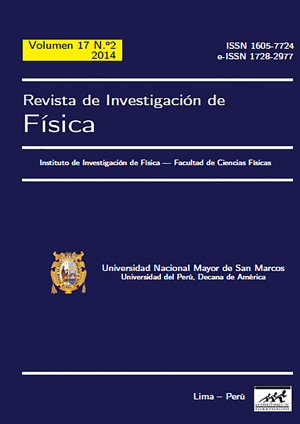Multiplicity and Transitoriness of Chaotic Events
DOI:
https://doi.org/10.15381/rif.v17i2.11542Keywords:
Nonlinear, dynamics, chaos, computer simulation, Runge-Kutta, Poincaré maps, numerical methodsAbstract
Commonly authors of literature dealing with chaos report a single and truncated chaotic event occurring in the chaotic system they have investigated. This paper reports a multiplicity of chaotic events detected in the non-linear damped and forced oscillator. In order to detect chaos in this oscillator, a Virtual Lab (integrated and interactive computer program) was developed by the author of this report. With this Virtual Lab many chaos simulations were executed and the resulting Poincaré Maps for angles of 0° and 180° were extracted and filtered to avoid event duplicity. It has been found that chaotic events do not last forever; they have a beginning and an end, which means they are transitory. No numerical connection has been detected between the natural frequency of a chaotic oscillator with that of the periodical applied force.Downloads
Published
Issue
Section
License
Copyright (c) 2014 Javier Montenegro Joo

This work is licensed under a Creative Commons Attribution-NonCommercial-ShareAlike 4.0 International License.
THE AUTHORS RETAIN THEIR RIGHTS:
a. The authors retain their trademark and patent rights, as well as any process or procedure described in the article.
b. The authors retain the right to share, copy, distribute, perform and publicly communicate the article published in the Revista de Investigación de Física (for example, place it in an institutional repository or publish it in a book), with an acknowledgment of its initial publication in the Revista de Investigación de Física.
c. The authors retain the right to make a subsequent publication of their work, to use the article or any part of it (for example: a compilation of their works, notes for conferences, thesis, or for a book), provided that they indicate the source. of publication (authors of the work, journal, volume, number and date).






